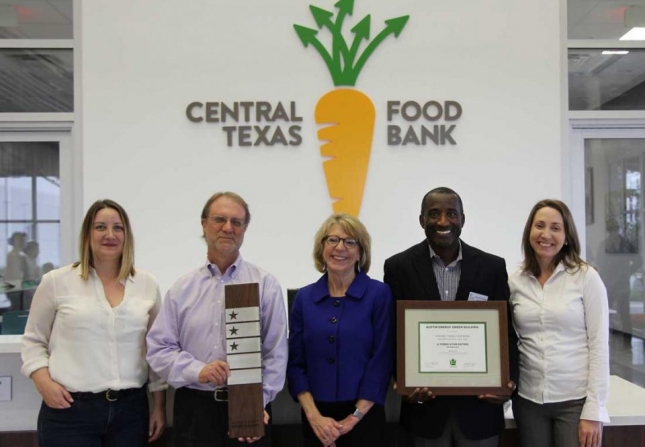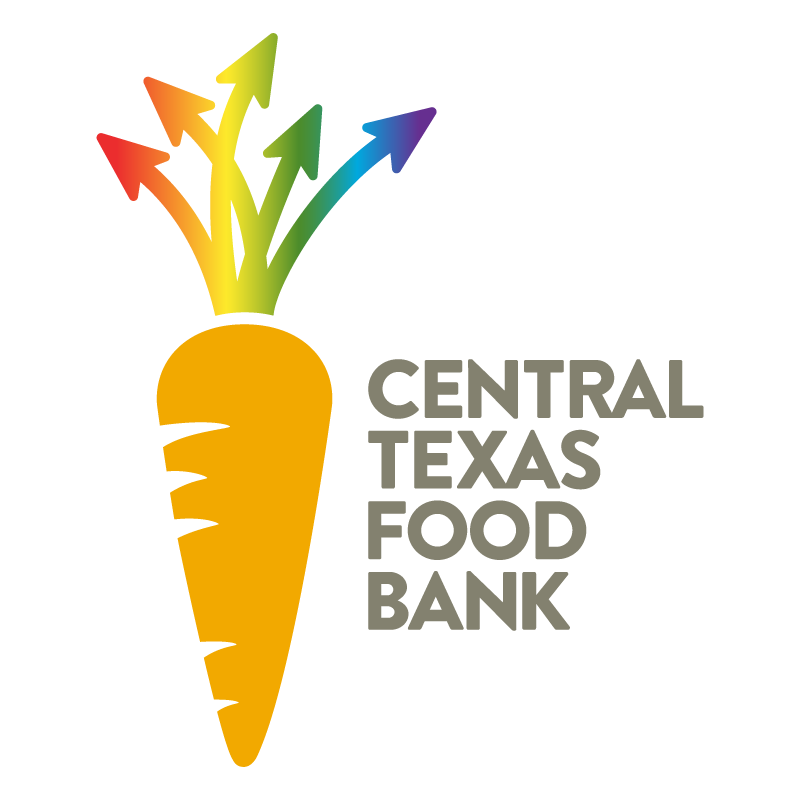
The Food Bank is proud to be awarded a three-star rating out of five on the sustainability of the new facility by Austin Energy Green Building.
 The new building replaced the former 60,000 square foot facility the Food Bank had outgrown. The six-year project allowed sustainability to take precedence to ensure the facility would serve the growing hunger gap in Central Texas.
The new building replaced the former 60,000 square foot facility the Food Bank had outgrown. The six-year project allowed sustainability to take precedence to ensure the facility would serve the growing hunger gap in Central Texas.
The facility was rated on building regulations, the integrated design, energy efficiency and performance, water use reduction, indoor environmental quality, materials and resources used, education and equity and innovation.
Though the increase in size meant an increase in overhead costs, the Food Bank implemented green features that would save money in the long run.
“The Austin Energy program gave us useful, specific steps that helped guide the design and construction of our new facility. As a result, we’re realizing a 29 percent savings of utility costs per square foot versus our old building,” Food Bank President and CEO, Derrick Chubbs, said.
At 135,000 square feet, the new Food Bank is the largest hunger relief organization in Central Texas. The facility provides double the warehouse space and seven times the cooler and freezer space, compared to the older building, a new community kitchen and a produce garden.
The project prioritized habitat restoration and outdoor water savings by adopting low water-using fixtures and equipment, and native and adapted plants. These measures helped reduce irrigation water use by 84 percent and indoor water use by 22 percent, according to the Austin Energy Green Building case study of the Food Bank.
To save on energy, the Food Bank implemented efficient lighting, HVAC and occupancy sensors and efficient refrigeration systems allowing 40 percent in energy savings. The energy-efficiency measures also earned the Food Bank $24,000 in rebates from Austin Energy. That’s 96,000 meals more going to families in need!
The Food Bank also earned some points on the construction of the building. Thirty-nine percent of building materials were made from recycled components and 35 percent of building materials were Texas-sourced.
These sustainable features along with day to day best practices maintaining the facility helped the Food Bank surpass its rating goal. More importantly, these elements have helped save money to ensure our resources are going to where it really matters: families in Central Texas.






